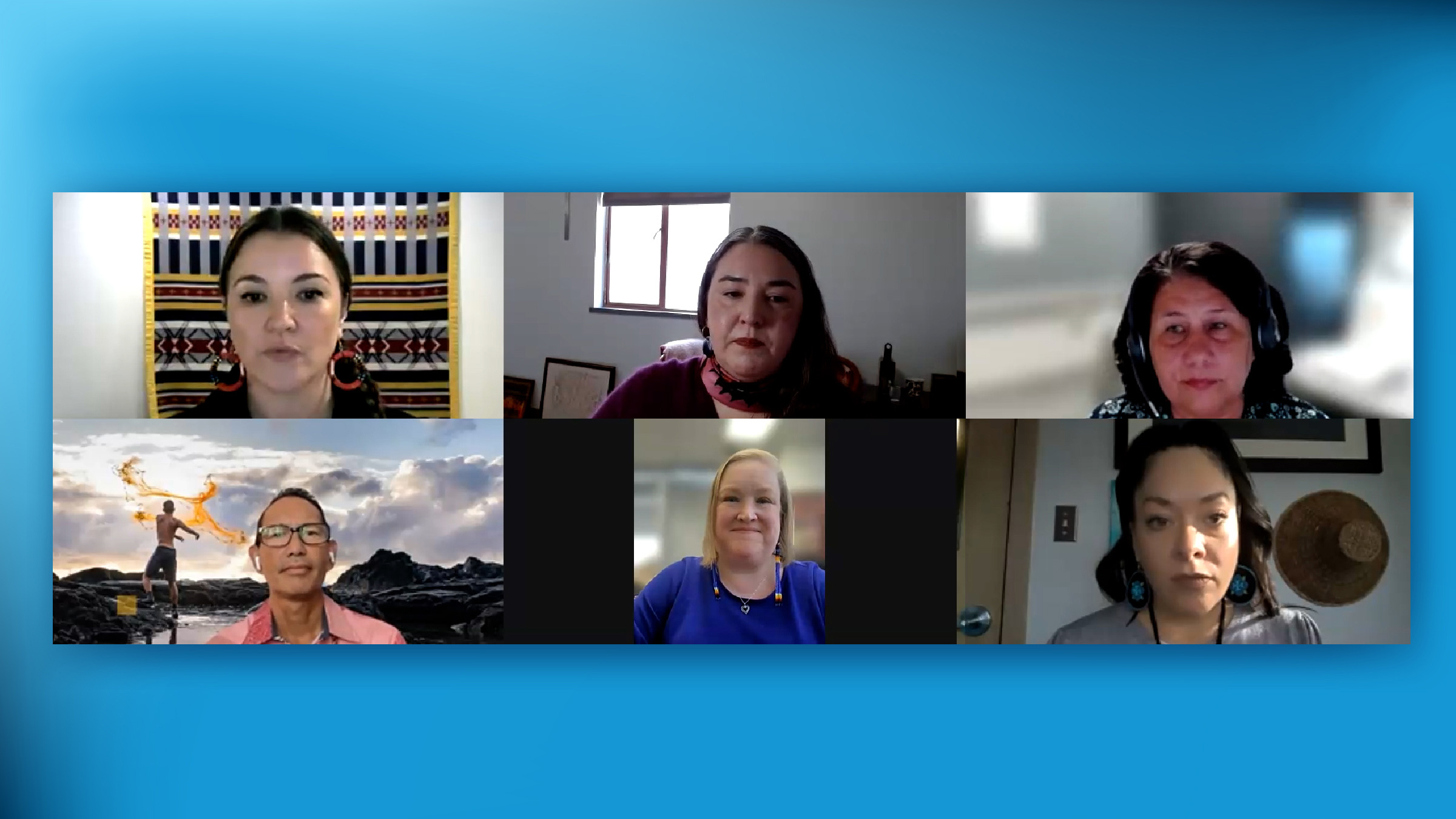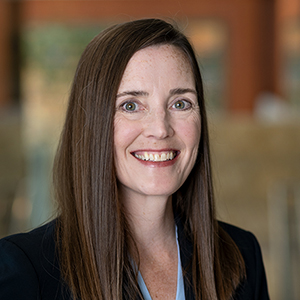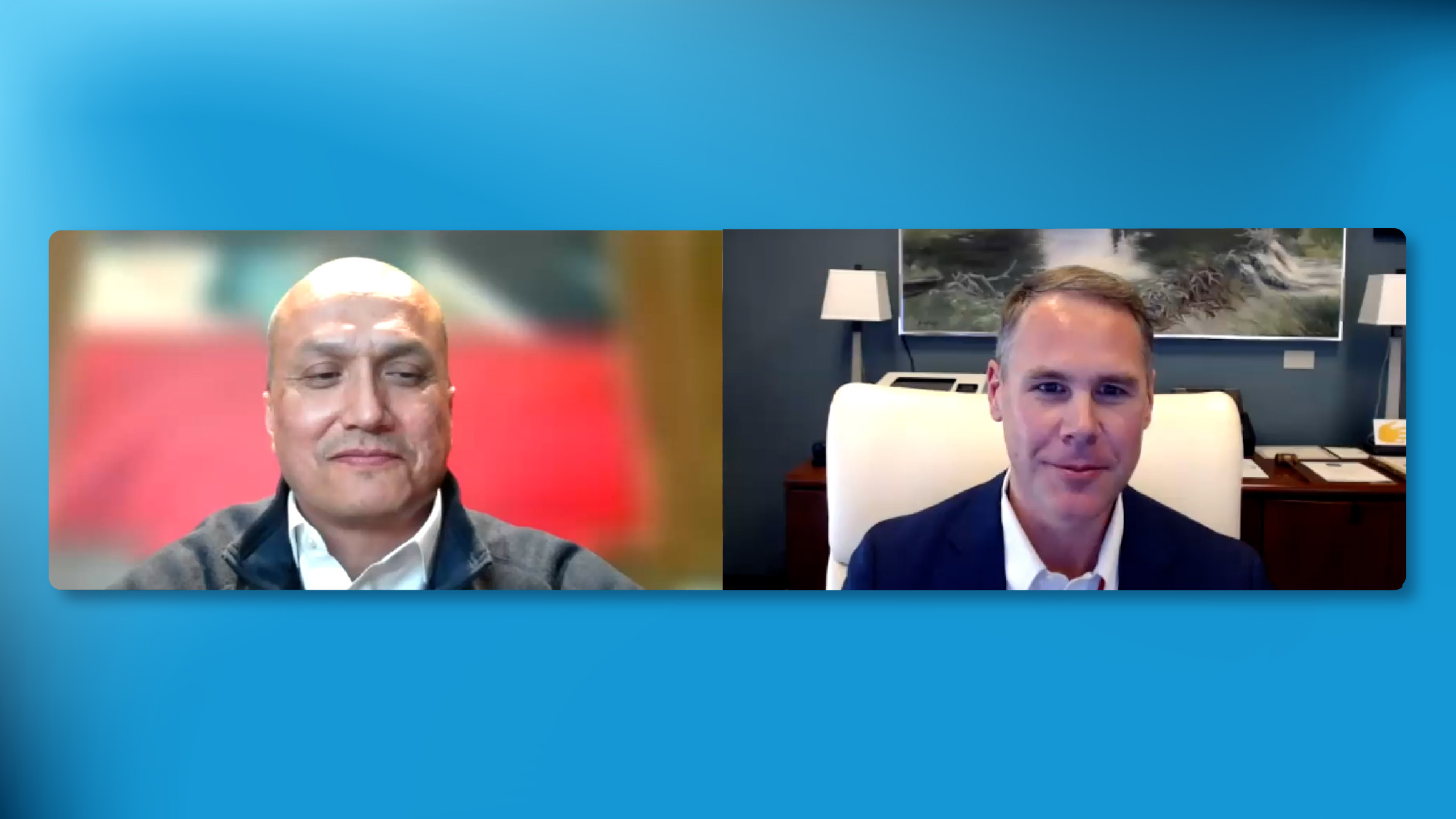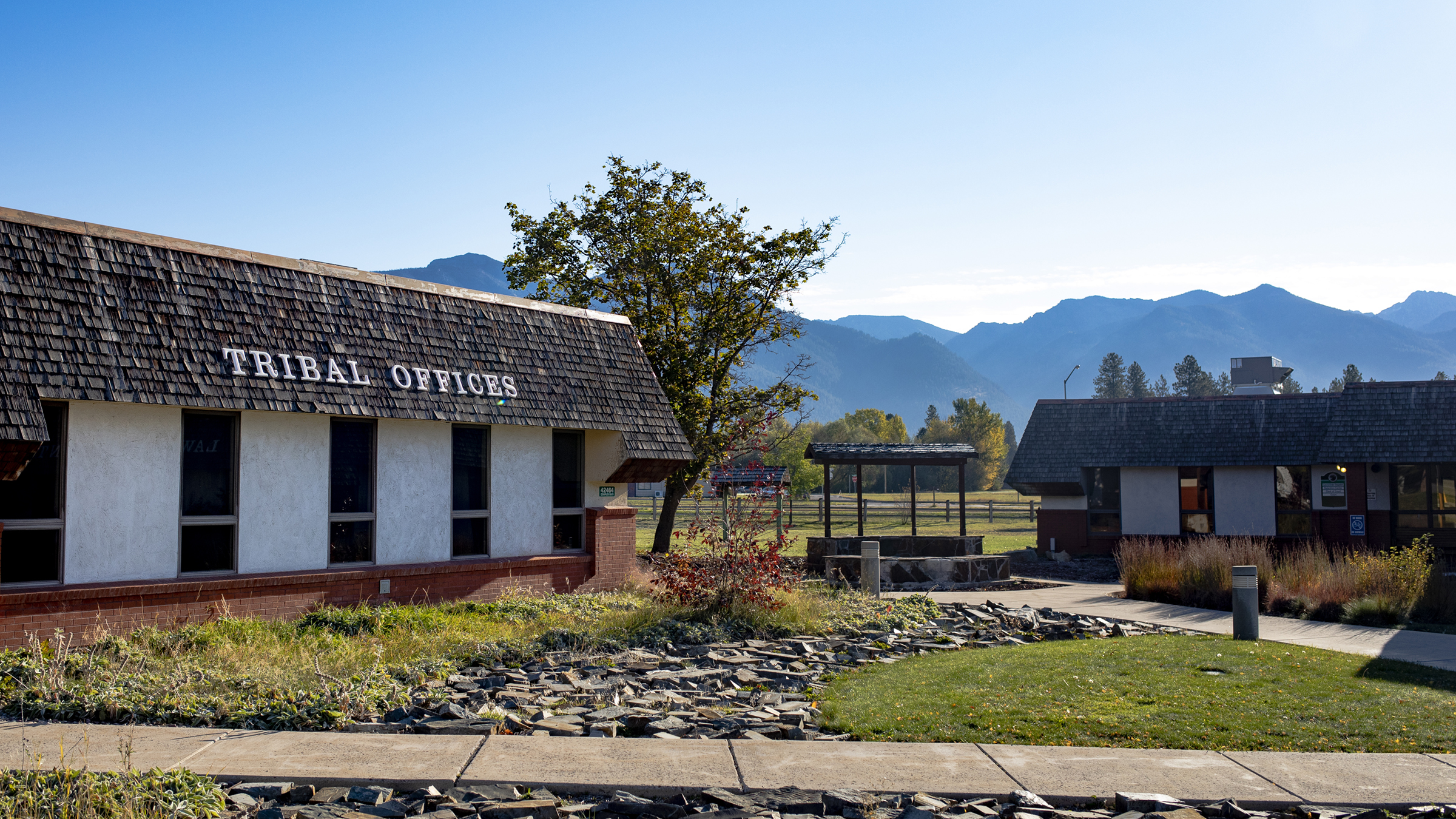Growing up on the Rosebud Reservation in South Dakota, Dawson Her Many Horses (Rosebud Sioux Tribe of South Dakota) learned the importance of data through the stories passed down to him. As recounted by his dad, ancestors used the winter count tradition to record historical information. Each winter, elders discussed major events of the past year, and a winter count keeper documented the most important event through drawings on the back of a buffalo hide.
Over time, winter counts chronicled history as told by ancestors. As an art form, they preserved cultural traditions.
“When I think about storytelling and I think about data, there’s this tradition in my tribe,” Her Many Horses said in a fireside chat during a virtual event the Center for Indian Country Development (CICD) hosted on December 13. The gathering focused on the importance of telling data stories in Indian Country—specifically, stories that, like winter counts, come from those communities.
Today, Her Many Horses champions the need for economic data in Indian Country as a managing director at Wells Fargo and member of CICD’s Leadership Council. He and other event speakers explored the importance of tapping into age-old storytelling practices to reframe modern narratives about Indian Country and seize economic opportunities.
Sovereignty in the digital age
The data needed to tell community stories look different today. Speakers at CICD’s event focused on economic data, which can include everything from information on access to capital to population data needed to secure federal funding allocations.
“You want better housing, you want better jobs, you want more education, you want more resources—all of that is dependent upon data,” said Maranda Compton (Delaware Tribe of Indians), founder and president of Lepwe Inc. and a recent CICD policy/legal fellow. Compton joined other panelists in a conversation on data stories from across Indigenous nations and communities.
Panelists explored the idea that in a digital era Native communities need data to govern, and their ability to access and make decisions about that data is a matter of sovereignty.
“Sovereignty has to do with digital assets just as much as it has to do with natural resource assets,” Compton said. “How do we self-determine in a digital era? How we do that has to be centered on how we tell our stories, and those stories are underlaid by data.”
Compton sees the potential for Indigenous knowledge and values to help everyone think about how to manage and apply data in a digital world. “We have always been leaders in how to govern, and I think we can be leaders in terms of digital sovereignty and digital governance as well.”
Hearkening to winter counts and other Indigenous storytelling practices, panelist Abigail Echo-Hawk (Pawnee), executive vice president of the Seattle Indian Health Board, drew the connection between data sovereignty and reclaiming cultural traditions. “I see data sovereignty as the reclamation of our Indigenous value systems of gathering information, analyzing it, doing it over and over and over again so that my babies, your babies, our babies grow into a greater future.”

Native community leaders participate in a panel discussion during CICD’s December 2023 event “Data Stories in Indian Country.” Top row, left to right: Maranda Compton (Lepwe Inc.), Amber Schulz-Oliver (moderator, Affiliated Tribes of Northwest Indians), and Lisa Watkins-Victorino (community partner). Bottom row: Pālama Lee (Lili‘uokalani Trust), Rebecca Naragon (United South and Eastern Tribes), and Abigail Echo-Hawk (Seattle Indian Health Board).
Reclaiming the use of data
In one story of data reclamation, Native Hawaiian community member Lisa Watkins-Victorino, who previously served as research director at the Office of Hawaiian Affairs, described a community effort to improve Native Hawaiians’ access to information about their communities. Several years ago, Watkins-Victorino and other participants in a data-sovereignty gathering launched conversations that culminated in creation of a Native Hawaiian Data Portal in 2019. The portal provides a central location for accessing state and federal data on Native Hawaiians—in a way that’s organized by aspects of Native Hawaiian well-being.
“It’s a way of making data public. It should live in the community,” said Pālama Lee (Native Hawaiian), research and evaluation director for Lili‘uokalani Trust, a partner in the initiative.
Launching the portal also helped community members identify data challenges, including missing data and datasets that combine Native Hawaiians with other population groups. In 2021, several Native Hawaiian Organizations partnered to address one of those gaps: the need for more comprehensive data on Native Hawaiians’ well-being. Today, the annual, statewide ‘Imi Pono Hawai‘i Wellbeing Survey gathers information on culturally based factors of well-being that can inform community services for Native Hawaiians.
Informing service delivery in changing times
For some Native communities, rapid change has made it important for government leaders to find ways to gather member perspectives on the opportunities and challenges before them. “We’re seeing tribal nations taking ownership of how we can build our own intentionally Indigenous-led data sources,” said Rebecca Naragon (Poarch Band of Creek Indians), economic development director of the United South and Eastern Tribes.
The Pokagon Band of Potawatomi in southwestern Michigan and northern Indiana is one example. Emerging from the Great Recession, the tribe experienced a period of significant development that included opening satellite casinos and breaking ground on a new tribal village. The tribe also needed to create a long-term plan for land acquisition and development, based on a constitutional requirement.
Amidst this change, “there really wasn’t a systematic approach to how we were allocating resources,” said CICD Senior Policy Analyst John Morseau (Pokagon Band of Potawatomi), who also serves as a Pokagon Band tribal council member and spoke from that role. “There was a lack of informed decision-making based on data. We just knew that we were trying to care for our citizens the best we could.”
In 2012, tribal leaders decided to undertake a tribal census—that is, a survey of tribal members conducted by the tribe itself—to gather citizen perspectives.
The effort required considerable planning, including determining whether the tribe would administer the survey or hire someone to help, how to fund the survey, what questions to ask, and how to encourage responses once the survey was in the field. The tribal council also passed motions to address concerns about data confidentiality.
“Developing and implementing a tribal census is quite a challenge,” said Pokagon Planning Manager Robert Torzynski, who helped with the effort. “Every tribe is going to be different in terms of their size and what they desire for the results.”
Despite the challenges, the census provided tribal leaders with valuable data to inform their planning. The Pokagon Band repeated the census in 2018.
Morseau encouraged other tribes considering a census to learn from their peers. “I’ve learned a lot from other tribal leaders, and I’m always willing to share to the extent that we can if it can benefit someone else.”
Compton also encouraged those seeking to build community data resources to start by exploring what data they need and what data are currently available. “If you want a really concrete first step, you can start with a data audit. What data are and are not out there right now? What are our top priorities, and what data do we need to effectuate those priorities?”
New tools for telling Indian Country data stories
New tools are also becoming available to support Native communities and individuals in telling their data stories. The data summit featured demonstrations of three data tools CICD recently introduced:
- Native Community Data Profiles offers a breadth of data that can be used to tell a more holistic story of Indian Country and individual Native communities. Users can select a Native community and explore data on its geography; people; and community infrastructure, including housing, education, health care, Internet connectivity, food access, labor force participation, industries, and income. Charts and data can be downloaded for use in presentations, reports, grant applications, and additional data analysis.
- The Native Entrepreneurship Dashboard tracks trends in Native American entrepreneurship and self-employment. Along with CICD’s Native American Labor Market Dashboard, the tool provides up-to-date data that illuminate the experiences and economic contributions of Native American workers.
- The Tribal Economic Zones tool shows the distances people travel to places of interest on individual reservations. Communities can use the tool to explore how the economic activity flowing into their reservation compares to that of other communities, changes throughout the year, and varies across industries. The tool sheds light on local reservation economies and the interconnectedness of tribal and regional economies.
The three new tools complement a suite of online data resources available from CICD, including tools that map the locations and assets of Native American Financial Institutions and illustrate economic development resources available across Indian Country. All CICD data tools are shaped by input from Indian Country stakeholders and CICD’s Leadership Council, and developed in keeping with CICD’s Principles for Research and Data Use.
Reframing the narrative
With new data tools available, and efforts underway to reclaim data use and systems, Native communities have opportunities to reframe—and reclaim—the stories told about their people and places. To Her Many Horses, that means flipping the narrative from a deficit-based perspective to one that honors the assets and opportunities in Indian Country, while acknowledging the challenges.
“We have rich cultures, languages, traditions—things that have helped us endure. What excites me about data is that it’s an opportunity to reframe how people think about us. There’s so much opportunity in tribal communities.”
Compton expressed a similar sentiment: “I think the stories that have been told about us in the past by others identify tribal nations and Native people as impacted entities,” she said. “What I want our data stories to start telling is that we are not just impacted entities, we are implementing governments. We are implementing regulators. We are implementing storytellers.”
As they explore new ways to tell data stories, Native leaders can learn from each other. Recalling his tribe’s history of crossing the mountains in Montana to meet with other tribes and transfer knowledge, CICD Director Casey Lozar (Confederated Salish and Kootenai Tribes) observed, “We’ve done that forever.”






